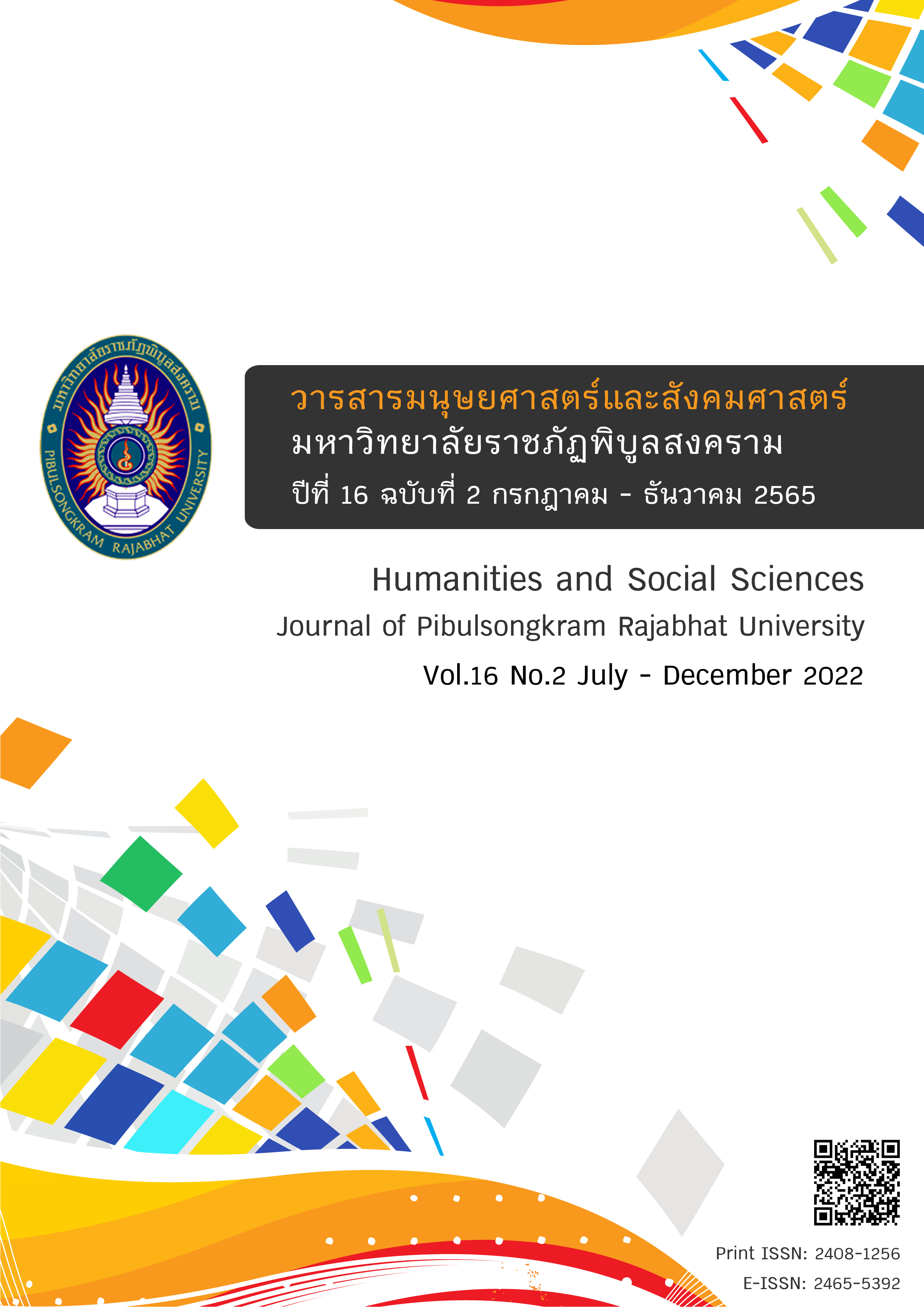Development of Screening Application for Type 2 Diabetes Mellitus in The Population ages 15-34 Year
DOI:
https://doi.org/10.14456/psruhss.2022.47Keywords:
Diabetes, Application, Risk screeningAbstract
This was a research and development research. The purposes of this research were develop an application for screening the risk of type 2 diabetes in population between 15 - 34 years old. The samples were type 2 diabetes risk group age 15 - 34 years, total 60 cases. The tools in collecting data were an evaluation form for user satisfaction. Data analysis were percentage, mean, and standard deviation. The results of the study showed that a type 2 risk screening application on the operating system, iOS and Android, has 3 functions comprised of: a user part, admin 1 and admin 2. The efficiency and satisfaction levels were very good. This screening application would be beneficial to the population at risk Type 2 diabetes, as individual can use it to assess their risk of developing diabetes on their own. Moreover, it can help to raise self-care awareness, which can promote behaviour modifications that could lead to diabetes prevention.
References
นิตยา พันธุเวทย์, และลินดา จำปาแก้ว. (2558). ประเด็นสารรณรงค์วันอัมพาตโลก ปี พ.ศ. 2557. นนทบุรี:กระทรวงสาธารณสุข.
สุรัตนา สุทธิชื่น. (2557). ระบบคัดกรองความเสี่ยงโรคเบาหวาน บนโทรศัพท์มือถือระบบปฏิบัติการแอนดรอยด์ (วิทยานิพนธ์ปริญญามหาบัณฑิต). กรุงเทพฯ: มหาวิทยาลัยเทคโนโลยีพระจอมเกล้าพระนครเหนือ.
สุนทร ม่วงทรัพย์สม. (2553). ระบบคัดกรองความเสี่ยงโรคเบาหวาน (วิทยานิพนธ์ปริญญามหาบัณฑิต). กรุงเทพฯ: มหาวิทยาลัยเทคโนโลยีพระจอมเกล้าพระนครเหนือ.
สำนักโรคไม่ติดต่อ กรมควบคุมโรค กระทรวงสาธารณสุข. (2559). รายงานประจำปี 2558. กรุงเทพฯ: สำนักงานกิจการโรงพิมพ์องค์การสงเคราะห์ทหารผ่านศึกในพระบรมราชูปถัมถ์.
สำนักโรคไม่ติดต่อ กรมควบคุมโรค กระทรวงสาธารณสุข. (2560). รูปแบบการบริการป้องกันควบคุมโรคเบาหวาน ความดันโลหิตสูง. นนทบุรี: โรงพิมพ์ชุมนุมสหกรณ์การเกษตรแห่งประเทศไทย.
Aekplakorn, W., Bunnag, P., Woodward, M., Sritara, P., Cheepudomwit, S., Yamwong, S. and Rajatanavin, R. (2006). A risk score for predicting incident diabetes in the Thai population. Diabetes Care, 29(8), 1872–1877.
Chen, L., Magliano, DJ., Balkau, B., Colagiuri, S., Zimmet, PZ., Tonkin, AM., and et al. (2010). AUSDRISK: an Australian type 2 diabetes risk assessment tool based on demographic, lifestyle and simple anthropometric measures. Med J, 192(4), 197-202.
Doi, Y., Ninomiya, T., Hata, J., Hirakawa, Y., Mukai, N., Iwase, M., and Kiyohara, Y. (2012). Two risk score models for predicting incident Type 2 diabetes in Japan. Diabetic Medicine, 29(1), 107–114.
Ha, K. H., Lee, Y. H., Song, S. O., Lee, J. W., Kim, D. W., Cho, K. H., and Kim, D. J. (2018). Development and validation of the Korean Diabetes Risk score: A 10-year national cohort study. Diabetes and Metabolism Journal, 42(5), 402–414.
Hippisley-Cox, J., Coupland, C., Robson, J., and Sheikh, A. (2009). Predicting risk of type 2 diabetes in England and Wales: prospective derivation and validation of QDScore. BMJ, 338(1), b880.
Mohan, V., Deepa, R., Deepa, M., Somannavar, S., and Datta, M. (2005). A simplified Indian Diabetes Risk Score for screening for undiagnosed diabetic subjects. Journal of Association of Physicians of India, J Assoc Physicians India, 53, 759–763.
Robinson, B.W., Germano, G., Song, Y., Abrams, J., Scott, M., Guariento, I., Tiso, N., Argenton, F., Basso, G., Rhodes, J., Kanki, J.P., Look, A.T., Balice-Gordon, R.J., and Felix, C.A. (2011). mll ortholog containing functional domains of human MLL is expressed throughout the zebrafish lifespan and in haematopoietic tissues. British journal of haematology 152(3): 307-321.
World Health Organization (WHO). (2020). Diabetes. retrieved December 22,2020. From https://www. who.int/health-topics/diabetes#tab=tab_1.
Zhou, H., Li, Y., Liu, X., Xu, F., Li, L., Yang, K., and Wang, C. (2017). Development and evaluation of a risk score for type 2 diabetes mellitus among middle-aged Chinese rural population based on the RuralDiab Study. Scientific Reports,17(February), From https://doi.org/10.1038/srep42685.
Downloads
Published
How to Cite
Issue
Section
License
Copyright (c) 2021 Humanities and Social Sciences Journal of Pibulsongkram Rajabhat University

This work is licensed under a Creative Commons Attribution-NonCommercial-NoDerivatives 4.0 International License.
Any articles or comments appearing in the Journal of Humanities and Social Sciences, Rajabhat Phibulsongkram University, are the intellectual property of the authors, and do not necessarily reflect the views of the editorial board. Published articles are copyrighted by the Journal of Humanities and Social Sciences, Rajabhat Phibulsongkram University.









